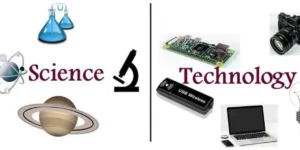What’s The Difference Between Science And Technology
In the ever-evolving landscape of human progress, the realms of science and technology stand as pillars shaping our understanding of the world. While often used interchangeably, a closer examination reveals distinct differences in their essence and applications.
Understanding the Fundamentals
Science: Probing the Unknown
At its core, science is the systematic exploration of the natural world through observation, experimentation, and analysis. Scientists seek to unravel the mysteries of the universe, formulating theories and laws based on empirical evidence. The pursuit of knowledge in disciplines like physics, biology, and chemistry characterizes the scientific method, grounding itself in the quest for truth and understanding.
Technology: Crafting Solutions
In contrast, technology is the practical application of scientific knowledge for specific purposes. It encompasses the tools, machinery, and systems designed to solve problems and enhance human life. The inventive fusion of science and engineering results in technological innovations that drive societal progress. Technology, unlike science, is inherently focused on creating tangible solutions to real-world challenges.

Interconnected yet Distinct
The Symbiotic Relationship
While science and technology are distinct, their relationship is symbiotic. Scientific discoveries often catalyze technological advancements, and in turn, technology provides new tools for scientific exploration. This dynamic interplay between the two fosters a continuous cycle of progress, propelling humanity forward.
Molecular Corrosion Technologies
Molecular corrosion technologies represent a cutting-edge approach to combatting the deteriorating effects of corrosion. By leveraging the principles of chemistry and material science, these technologies aim to create protective barriers at the molecular level. This preventive measure proves invaluable across industries, safeguarding infrastructure, machinery, and critical components from the debilitating impact of corrosion.




